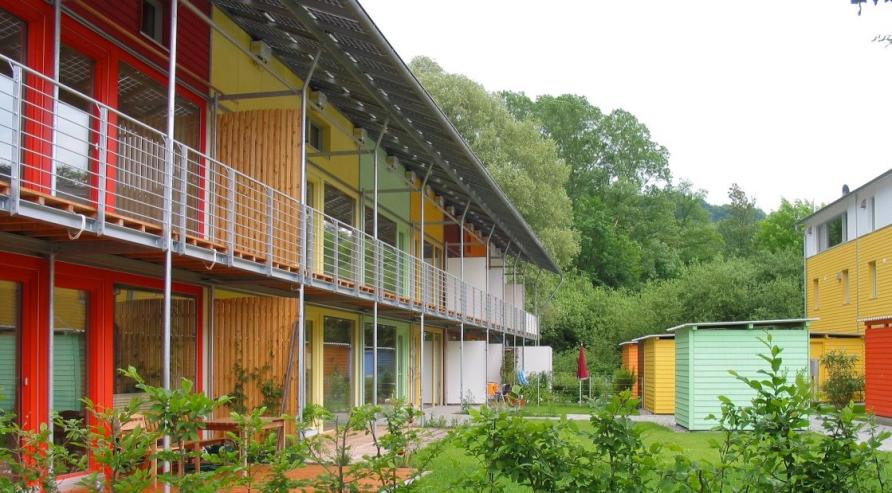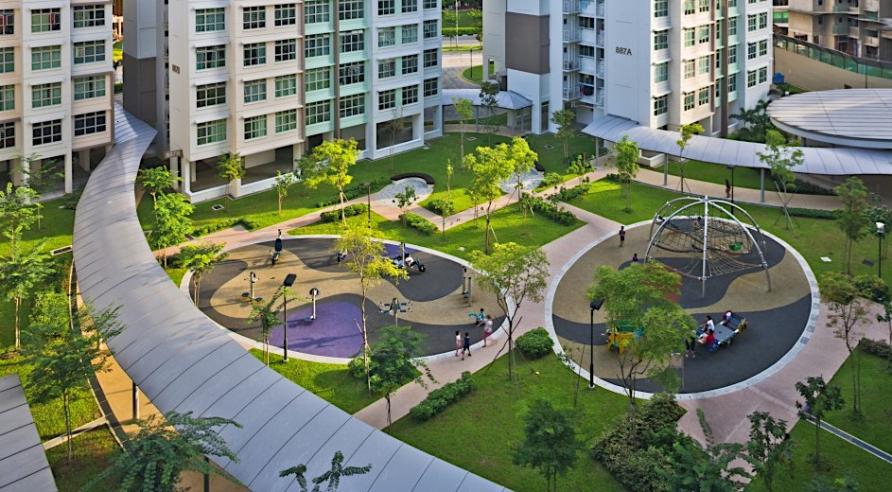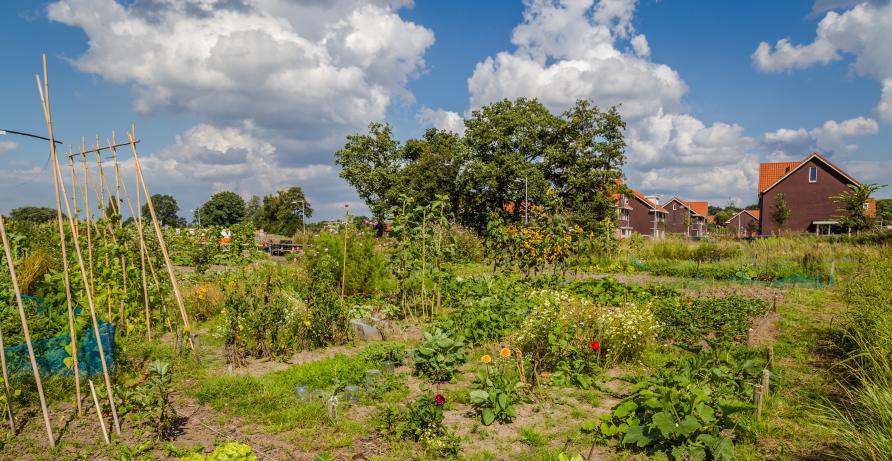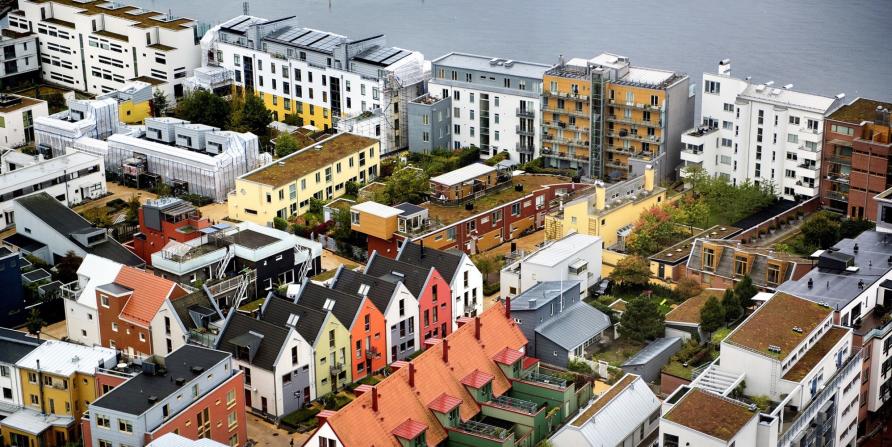Futures Forum: Building houses on the greenbelt @ BBC Two's 'The New Builds are coming: Battle in the Countryside'
Futures Forum: Greater Exeter Strategic Plan for Exeter, East Devon, Mid Devon and Teignbridge and the plans for new housing >>> CPRE seminar with MP Hugo Swire: Friday 19th January
Rather, we should be building communities:
Futures Forum: A solution to our housing problems: community groups putting forward their own development plans and working to build community-led housing on public land.
As voiced by a young Devonian recently:
Simply concreting over England’s green and pleasant lands - isn’t going to solve a national crisis. The South West is a prominent victim of these failed policies with over development dividing and destroying both rural and urban communities. In his book ‘The Death of Rural England’, Professor Alun Howkins says that, "During the last century, the countryside has changed absolutely fundamentally”. Large housing developments without the necessary infrastructure to support these extra people mean pretty villages and market towns are reduced to an urban sprawl of poorly built suburbs.
In essence, rather than building houses, developers must build communities.
Futures Forum: A solution to our housing problems: build communities
We need better build suburbs:
Ellen Dunham-Jones: Retrofitting suburbia | TED Talk
11 Urban Design Tactics for Suburban Retrofitting | Build a Better Burb
With ideas from the Transition Town movement - as highlighted from the University of Melbourne:
RETROFITTING SUBURBIA
As cities continue their relentless sprawl, how do we retrofit existing suburbs to move toward a sustainable future?
By Dr Sam Alexander, University of Melbourne
Urban development typically looks to governments, local and national, to take the lead in transforming urban landscapes to promote sustainability and wellbeing. This is especially so when problems requiring a coordinated response – such as climate change – are deep and urgent.
However, in many parts of the world, including Australia, recent and current government policies provide little hope that the range of structural changes necessary to create more sustainable, low-carbon cities will emerge from the ‘top down’.

Vauban in Freiburg, Germany, was built as a a sustainable model district. Picture: Alain Rouiller/Flickr.
Despite paying lip service to sustainability issues, most politicians still operate firmly within an outdated growth paradigm in which new roads, new coal mines, or fracking for oil and gas, are touted as solutions to urban transport and energy problems. Too often we see cities continuing to eat away at their surrounding greenways with conventional, sprawling, poorly designed housing developments. Business-as-usual more or less prevails.
The nascent Transition Towns Movement (known as TTM) provides one of the more well-known social movements to emerge during the last decade in response to overlapping energy, environmental and economic crises.
Whereas the more established Ecovillage Movement has generally sought to escape the urban context to establish experiments in alternative living, the TTM, motivated by similar concerns, tends to accept the challenge of transforming urban life from within the urban boundary.
Despite paying lip service to sustainability issues, most politicians still operate firmly within an outdated growth paradigm in which new roads, new coal mines, or fracking for oil and gas, are touted as solutions to urban transport and energy problems. Too often we see cities continuing to eat away at their surrounding greenways with conventional, sprawling, poorly designed housing developments. Business-as-usual more or less prevails.
The nascent Transition Towns Movement (known as TTM) provides one of the more well-known social movements to emerge during the last decade in response to overlapping energy, environmental and economic crises.
Whereas the more established Ecovillage Movement has generally sought to escape the urban context to establish experiments in alternative living, the TTM, motivated by similar concerns, tends to accept the challenge of transforming urban life from within the urban boundary.
AN ENERGY DECENT FUTURE
In the absence of progressive political leadership, might the TTM niche or something like it need to play a role creating new urban landscapes? What potential has this movement for changing the regime? What are the challenges it might face? And could cities ever become interconnected hubs of Transition Towns at large?

Punggol is an eco-precinct in Singapore promoting sustainable green living. Picture: Singapore Housing & Development Board
Today, most in the TTM are working on figuring out how to make the best of existing urban infrastructure – a task David Holmgren, best known as one of the co-originators of the permaculture concept, refers to as ‘retrofitting the suburbs for the energy descent future’.
It makes sense to begin the Transition process by improving what already exists rather than seeking to create something entirely new. After all, we are hardly going to knock down the suburbs and build things again from scratch in a ‘greener’ way.
A key advantage of the retrofitting strategy lies in the power and responsibility it places in individuals, households, and communities just to get started reinventing their neighbourhoods, without waiting for government action – action which, in any case, may not be forthcoming.
Indeed, even if government action were to be forthcoming, it may be utterly misconceived (e.g. more roads! more sprawl!), and ultimately do more harm than good by locking in further path dependency.
Today, most in the TTM are working on figuring out how to make the best of existing urban infrastructure – a task David Holmgren, best known as one of the co-originators of the permaculture concept, refers to as ‘retrofitting the suburbs for the energy descent future’.
It makes sense to begin the Transition process by improving what already exists rather than seeking to create something entirely new. After all, we are hardly going to knock down the suburbs and build things again from scratch in a ‘greener’ way.
A key advantage of the retrofitting strategy lies in the power and responsibility it places in individuals, households, and communities just to get started reinventing their neighbourhoods, without waiting for government action – action which, in any case, may not be forthcoming.
Indeed, even if government action were to be forthcoming, it may be utterly misconceived (e.g. more roads! more sprawl!), and ultimately do more harm than good by locking in further path dependency.

Urban farms in established suburbs have turned unused land into productive areas. Picture: Shutterstock
Furthermore, in crisis situations, governments may not always have the resources to solve local problems, in which case building resilience in advance of potential crises is a sensible task for local communities to undertake.
At the personal level, retrofitting the suburbs might involve, for example, taking in boarders by filling an empty room to prevent further urban sprawl; putting solar panels on the roof; or retrofitting a poorly insulated house by putting up thick curtains and sealing gaps in windows and doors to increase energy efficiency and minimise energy consumption.
Furthermore, in crisis situations, governments may not always have the resources to solve local problems, in which case building resilience in advance of potential crises is a sensible task for local communities to undertake.
At the personal level, retrofitting the suburbs might involve, for example, taking in boarders by filling an empty room to prevent further urban sprawl; putting solar panels on the roof; or retrofitting a poorly insulated house by putting up thick curtains and sealing gaps in windows and doors to increase energy efficiency and minimise energy consumption.
PRODUCTION VS CONSUMPTION
Mr Holmgren and others in the TTM are also advocates of transforming the household into a place of production again – as it was in centuries or even decades gone by – and not leave households merely as a places of consumption, which they have essentially become in most developed urban contexts today.
At the communal level, the retrofitting transition strategy could mean working on establishing projects such as farmers’ markets, sharing networks, community gardens, food-swap groups, skill share workshops, educational film nights, community energy projects, local currencies, or helping on a local wildlife restoration project.

Västra Hamnen, once an industrial area, is now a carbon-neutral neighbourhood in Sweden. Picture: Aline Lessner/imagebank.sweden.se
The key aims of this broad strategy would be to decarbonise and relocalise economies as far as possible, while enriching community engagement through collective action.
These Transition activities are currently small in the greater scheme of things and are easily dismissed by critics (with some justification) as of trifling transformative significance. Our immediate task, however, is to consider what this movement might become if ‘retrofitting the suburbs’ came to be embraced and radicalised, not just by a handful of dedicated and informed social activists, but by large segments of a local community or suburb.
The most likely ‘spark’ for this movement to scale up is a deepening crisis in the global economy, although others also offer suggestions for how the movement could scale up and translate its message in advance of crisis.
The key aims of this broad strategy would be to decarbonise and relocalise economies as far as possible, while enriching community engagement through collective action.
These Transition activities are currently small in the greater scheme of things and are easily dismissed by critics (with some justification) as of trifling transformative significance. Our immediate task, however, is to consider what this movement might become if ‘retrofitting the suburbs’ came to be embraced and radicalised, not just by a handful of dedicated and informed social activists, but by large segments of a local community or suburb.
The most likely ‘spark’ for this movement to scale up is a deepening crisis in the global economy, although others also offer suggestions for how the movement could scale up and translate its message in advance of crisis.

Solar panels installed on suburban roofs in South Australia. Picture: Shutterstock
LIVING WITHIN OUR SUSTAINABLE MEANS
What is clear is that over the long term, if the TTM is to be of any deep transformative significance, it must go beyond current retrofitting and Transition activities and more fundamentally remake suburbs and towns into highly self-sufficient but interconnected urban villages through collective, grassroots action.
But ‘Transitioning’ is both an inner and outer process. Change is needed not only in the external physical structures, institutions, and organisations upon which societies rest, but also in our world views, norms, attitudes and values.
In recognition of this, the Transition model of change attempts to weave together the power of imagination, visioning and storytelling, with the practical manifestation of these alternatives, through the engagement of the head, the heart and the hands.
The value of more creative visioning exercises resides in their potential to help people break free from dominant development and sustainability scenarios which almost always assume ‘green growth’ will provide a smooth transition pathway to sustainability without requiring much in the way of lifestyle change.
The TTM presents a more challenging vision of change, but it may represent ‘life within sustainable limits’ far more accurately than those mainstream visions of sustainability.
This is an edited extract from Urban Sustainability Transitions: Australian Cases- International Perspectives published by Springer. More information available here.
Banner: Vauban/Shutterstock

No comments:
Post a Comment